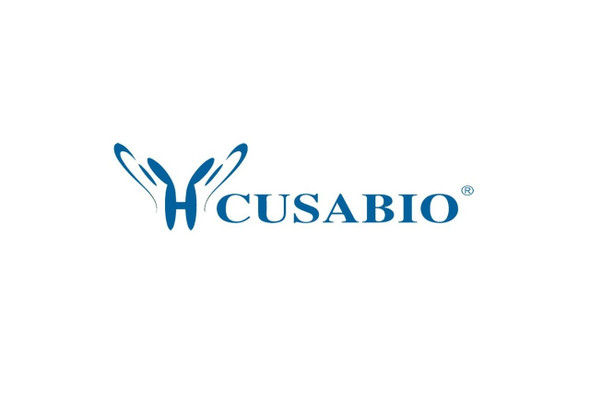Cusabio Human Recombinants
Recombinant Human Wilms tumor protein (WT1) | CSB-YP026158HU
- SKU:
- CSB-YP026158HU
- Availability:
- 25 - 35 Working Days
Description
Recombinant Human Wilms tumor protein (WT1) | CSB-YP026158HU | Cusabio
Alternative Name(s): WT33
Gene Names: WT1
Research Areas: Cancer
Organism: Homo sapiens (Human)
AA Sequence: MGSDVRDLNALLPAVPSLGGGGGCALPVSGAAQWAPVLDFAPPGASAYGSLGGPAPPPAPPPPPPPPPHSFIKQEPSWGGAEPHEEQCLSAFTVHFSGQFTGTAGACRYGPFGPPPPSQASSGQARMFPNAPYLPSCLESQPAIRNQGYSTVTFDGTPSYGHTPSHHAAQFPNHSFKHEDPMGQQGSLGEQQYSVPPPVYGCHTPTDSCTGSQALLLRTPYSSDNLYQMTSQLECMTWNQMNLGATLKGVAAGSSSSVKWTEGQSNHSTGYESDNHTTPILCGAQYRIHTHGVFRGIQDVRRVPGVAPTLVRSASETSEKRPFMCAYPGCNKRYFKLSHLQMHSRKHTGEKPYQCDFKDCERRFSRSDQLKRHQRRHTGVKPFQCKTCQRKFSRSDHLKTHTRTHTGKTSEKPFSCRWPSCQKKFARSDELVRHHNMHQRNMTKLQLAL
Source: Yeast
Tag Info: N-terminal 6xHis-tagged
Expression Region: 1-449aa
Sequence Info: Full Length
MW: 51.2 kDa
Purity: Greater than 90% as determined by SDS-PAGE.
Relevance: Transcription factor that plays an important role in cellular development and cell survival. Regulates the expression of numerous target genes, including EPO. Plays an essential role for development of the urogenital system. Recognizes and binds to the DNA sequence 5'-CGCCCCCGC-3'. It has a tumor suppressor as well as an oncogenic role in tumor formation. Function may be isoform-specific: isoforms lacking the KTS motif may act as transcription factors. Isoforms containing the KTS motif may bind mRNA and play a role in mRNA metabolism or splicing. Isoform 1 has lower affinity for DNA, and can bind RNA.
Reference: "Homozygous deletion in Wilms tumours of a zinc-finger gene identified by chromosome jumping."Gessler M., Poustka A., Cavenee W., Neve R.L., Orkin S.H., Bruns G.A.P.Nature 343:774-778(1990)
Storage: The shelf life is related to many factors, storage state, buffer ingredients, storage temperature and the stability of the protein itself. Generally, the shelf life of liquid form is 6 months at -20?/-80?. The shelf life of lyophilized form is 12 months at -20?/-80?.
Notes: Repeated freezing and thawing is not recommended. Store working aliquots at 4? for up to one week.
Function: Transcription factor that plays an important role in cellular development and cell survival
Involvement in disease: Frasier syndrome (FS); Wilms tumor 1 (WT1); Denys-Drash syndrome (DDS); Nephrotic syndrome 4 (NPHS4); Meacham syndrome (MEACHS); Mesothelioma, malignant (MESOM)
Subcellular Location: Nucleus, Nucleus, nucleolus, Cytoplasm
Protein Families: EGR C2H2-type zinc-finger protein family
Tissue Specificity: Expressed in the kidney and a subset of hematopoietic cells.
Paythway:
Form: Liquid or Lyophilized powder
Buffer: If the delivery form is liquid, the default storage buffer is Tris/PBS-based buffer, 5%-50% glycerol. If the delivery form is lyophilized powder, the buffer before lyophilization is Tris/PBS-based buffer, 6% Trehalose, pH 8.0.
Reconstitution: We recommend that this vial be briefly centrifuged prior to opening to bring the contents to the bottom. Please reconstitute protein in deionized sterile water to a concentration of 0.1-1.0 mg/mL.We recommend to add 5-50% of glycerol (final concentration) and aliquot for long-term storage at -20?/-80?. Our default final concentration of glycerol is 50%. Customers could use it as reference.
Uniprot ID: P19544
HGNC Database Link: HGNC
UniGene Database Link: UniGene
KEGG Database Link: KEGG
STRING Database Link: STRING
OMIM Database Link: OMIM









